In setting the route for this crossing I intentionally added exotic stretches so that Mark Beckwith, my walking companion, could see as much varied terrain and as many degrees of isolation as possible.
To that end, we planned to go on the western side of the River Feshie, the watercourse that created one of the Highlands’ best-loved valleys, Glen Feshie.
“It’s good to see you opting for an interesting and adventurous variation on the popular Feshie/Goldie corridor,” wrote the man who reviewed and approved (“vetted”) my route, Colin Crawford. “You’ll lose most other Challengers by following the West Bank . . . I’ve never walked the path through Allt Lorgaidh; it is rather a route to nowhere and likely to be rarely frequented . . . The way through to Caochan Dubh will be trackless but likely not too demanding and, hopefully, you’ll find good pitches on the grassy river flats. Enjoy your pitch here, a deliciously remote spot.”
Couldn’t be better, right?
Several bridges over the River Feshie had washed out in recent years, making a commitment to the west bank essentially irreversible once a person had dropped south of the main bridge still standing. Inspection of the topo map revealed a very steep climb planned for the afternoon, and then an eastward walk over the high moors on no path. Our projected camping spot was on a high, flattish bench with a lot of small ponds—unlikely to be dry. In all, it looked like a repeat of our first day, the one in which our 8.5 mile route turned into 17 miles.
It was with some guilt I proposed that we do the “foul-weather alternative” for the day—a tamer trip down the east bank, which I’d done on a previous Challenge. The “interesting and adventurous variation” that had so impressed the vetter would be for another life.
This decision paid off almost immediately.
We stopped for lunch before going over the remaining bridge to the east bank. It was windy and we sought protection on the slope down to the river, on a mat of dead grass and ferns under some trees. We lay down with boots off and our feet bare, our packs were up at the trail.
“Resting your boots, I see,” said someone coming through the thicket. I craned my neck to look. It was Ole, the Danish man we’d had dinner with at the Lochailort Inn the night before we started. (Pretty clever line, too, given that it was in one of his five non-native languages.)
We greeted him like an old friend, which he was in the TGOC time warp.
He sat down next to us and took off his boots, not to rest his feet but to inspect his right ankle. He’d twisted it the previous afternoon. It was red and swollen, and he was walking on it conditionally, not sure how long it would hold up or whether he’d have to “retire” from the Challenge.
We invited him to join us. Normally, he was an upright, long-striding machine. Crippled, however, he might be in our league. He said he’d love to walk with us (and he has been ever since).
Our interim destination was a bothy partway up the glen (the river was flowing north) that I’d seen in 2015. Back then it was like most bothies— dark and dingy, more interesting than inviting. Since then, the owner of the estate (which comprises most of the glen) had spent more than $350,000 turning it into a show piece.
It was about 200 years old. Everything had been removed down to the lintels over the windows. The wooden floor was pulled up, and three feet of dirt–the original dirt floor–dug out. A two-story addition, with sleeping rooms upstairs, was added.
The owner of the estate, it turns out, is a Dane, Anders Holch Povlsen, who made a fortune in clothing. He’s the largest private landowner in Scotland, with 221,000 acres. In 2020 he was the 255th richest person in the world, Ole told us.
Greeting us outside as we took off our packs was an elderly man named Lindsay Bryce, the official bothy host whom I’d met on the previous visit. He wore a plaid sweater and a herringbone flat cap.
Lindsay had made enough money in oil and gas to retire at 45. (He’d had long stretches in India and Congo Brazzaville.) He has a house in Glasgow, which he gets down to every other month; he spent 42 days there last year. Most of the rest of the time he’s at the bothy, sleeping in a non-private room upstairs and serving walkers tea and fruit for free.
There was a wood fire in a stove and a kettle continuously boiling. As he served us, four more people arrived.
“I cannot fault him in his vision,” Lindsay said, understatedly, about the Danish proprietor’s renovation project. At one point, he put up two hooks in the upstairs rooms, anchoring them with Phillips head screws. “He spotted them,” Lindsay said of the owner. “He asked me to replace them with domed slot-head screws, as that was the design style for a building like this.”
It would have been nice to stay there. Besides Lindsay, there were only two guests set for that night. (The record is 42; I should have asked what the weather was like that day). But we had a long way to go.
Where we’d end up was uncertain. We were hoping for another bothy, given the flimsiness of my tent (and Mark’s too), but there were none in walking distance. Lindsay did tell us, however, there was the remains of a pony shed (probably floored in dung, he warned) and the ruin of a structure one might be able to crawl into, about seven miles away. We headed for it.
The trail was a long, steady climb, on a single path through the heather and grass. At places the path was eroded, with a long slide down to the river if one lost his step.
We soon hit what became our modus operandi—Ole and Mark at least five minutes ahead of me, sometimes out of view.
We walked, and we finally got there. In all, we’d walked 18.4 miles that day.
Across a small burn on a high spot was a red tent. Bernie Roberts, a 76-year-old man on his 23d crossing, stuck his head out of the door and said hello. Not far down the hillside from him was a tiny building with one intact wall and a metal roof. The dung, thankfully, was long gone.
Carved into one of the remaining pieces of woo, and barely legible under lichen was a date: “AD 24 – 10 – 00” (October 24, 1900, presumably when it was built).
There was just enough room in it for my tent, whose pitch I improved by cinching the top of it to the remaining underlayment of the roof with a piece of parachute cord. Mark and Ole pitched outside.
By that time it had started to rain. We retired to our tents to cook and eat alone, talking like the aforementioned “kinsmen met a night” in adjoining tombs. It eventually got dark and eventually we fell silent.
The next morning after breakfast I climbed up the slope. Bernie was long gone. A low and incomplete set of walls was all that remained of a small building, purpose and age unknown. There was nothing one could have crawled into to get out of the weather.
Next to it, perceptible only by a change in the mix of mosses at its perimeter, was the buried remains of an attached room, probably for animals.
The back wall, covered in moss two-inches thick, was a good place to stand and take a panoramic shot with my phone.
It was raining lightly, trichromatic, empty, mysterious, and cold—another perfect day to walk in Scotland.


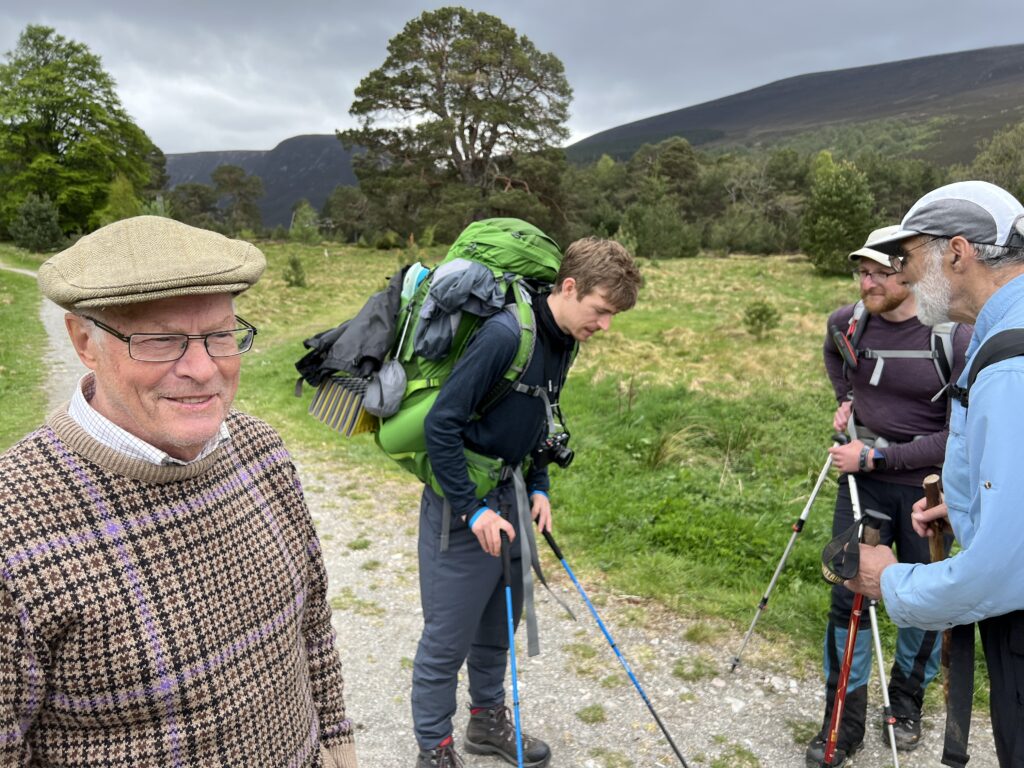
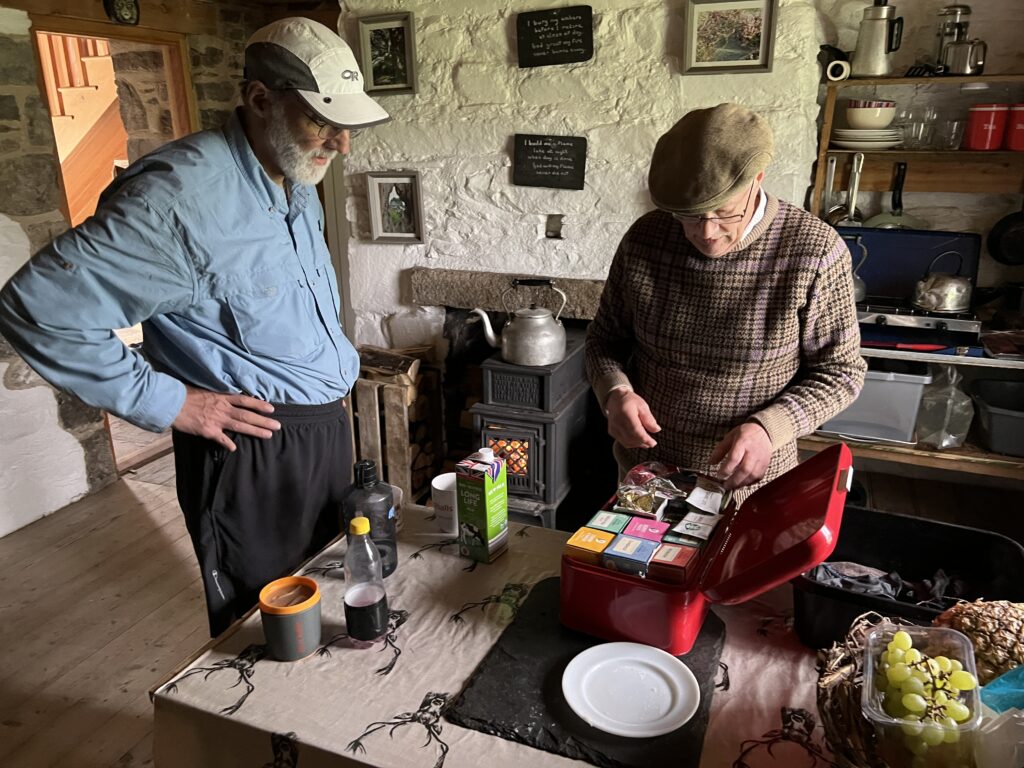
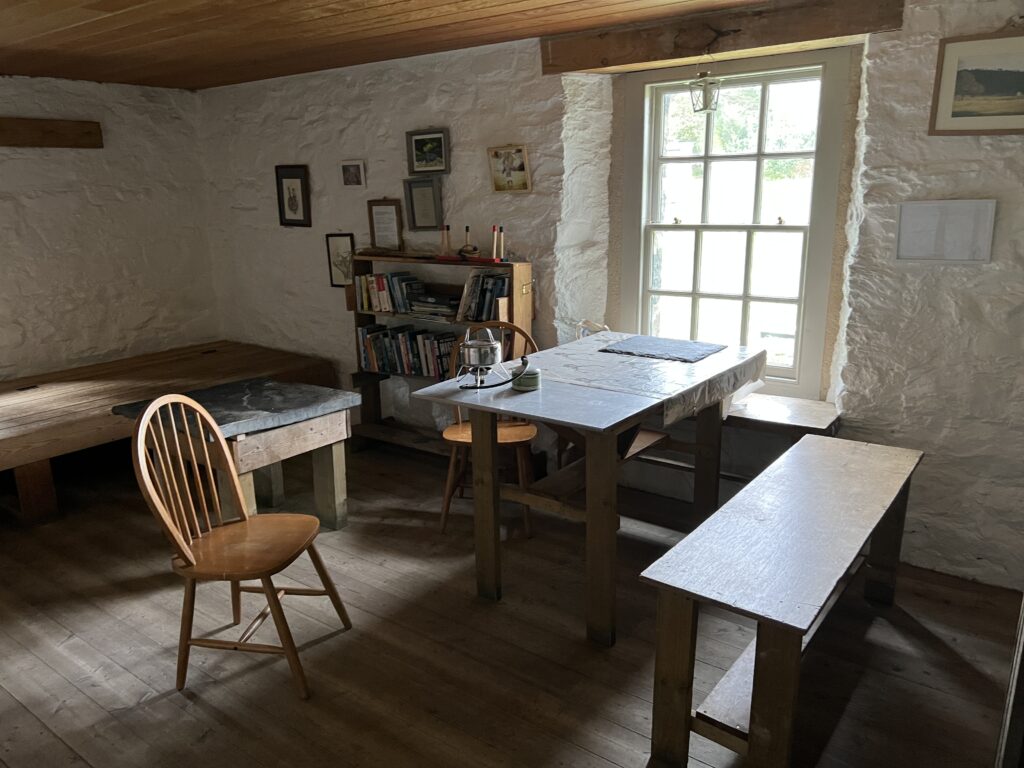
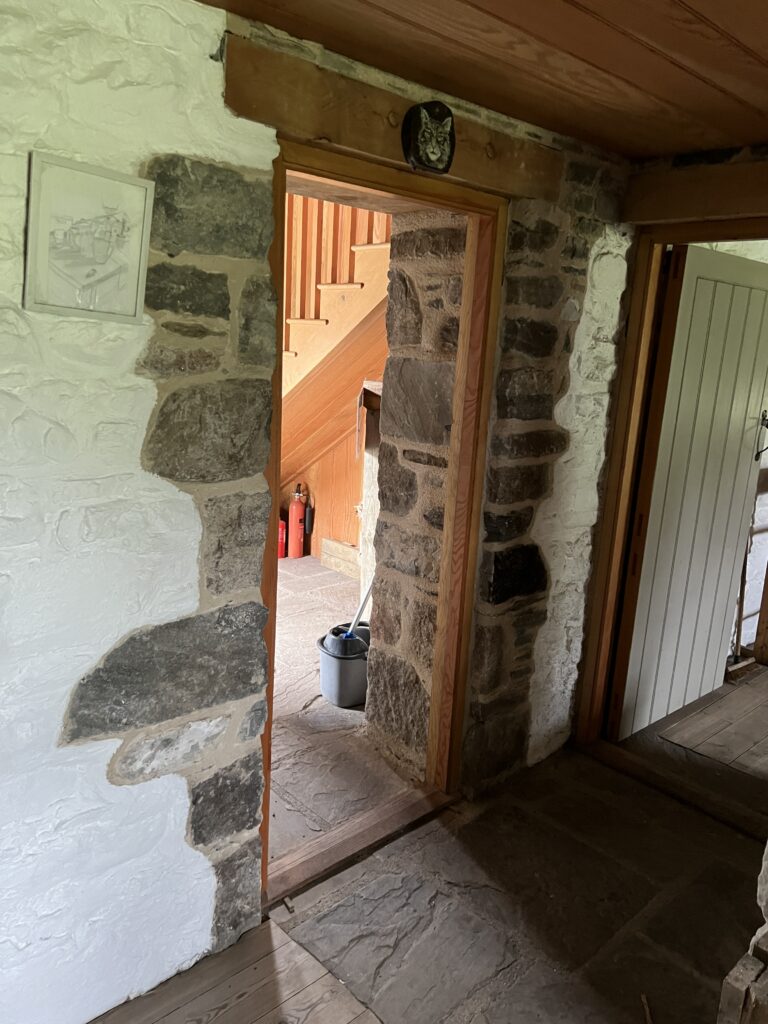
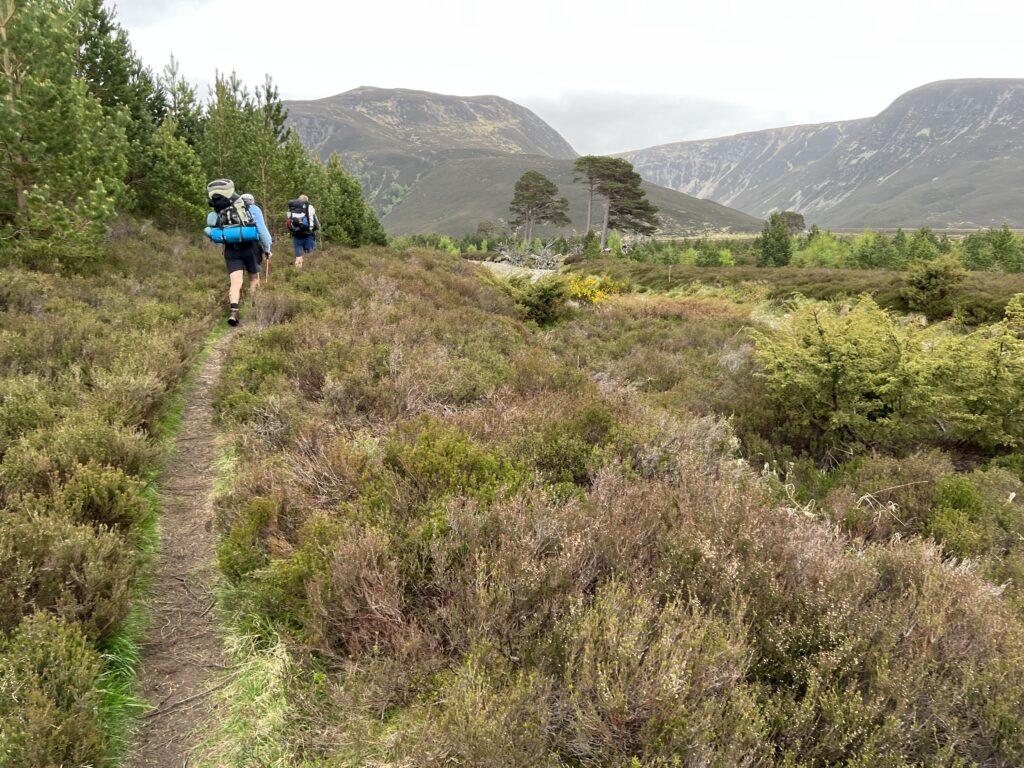
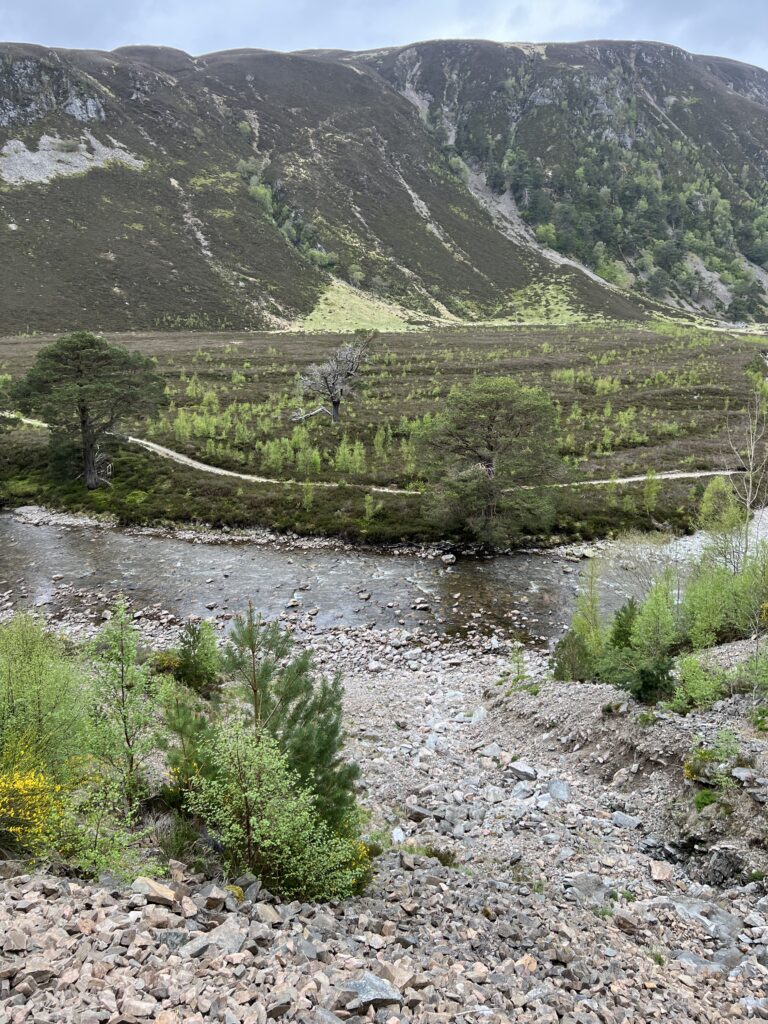


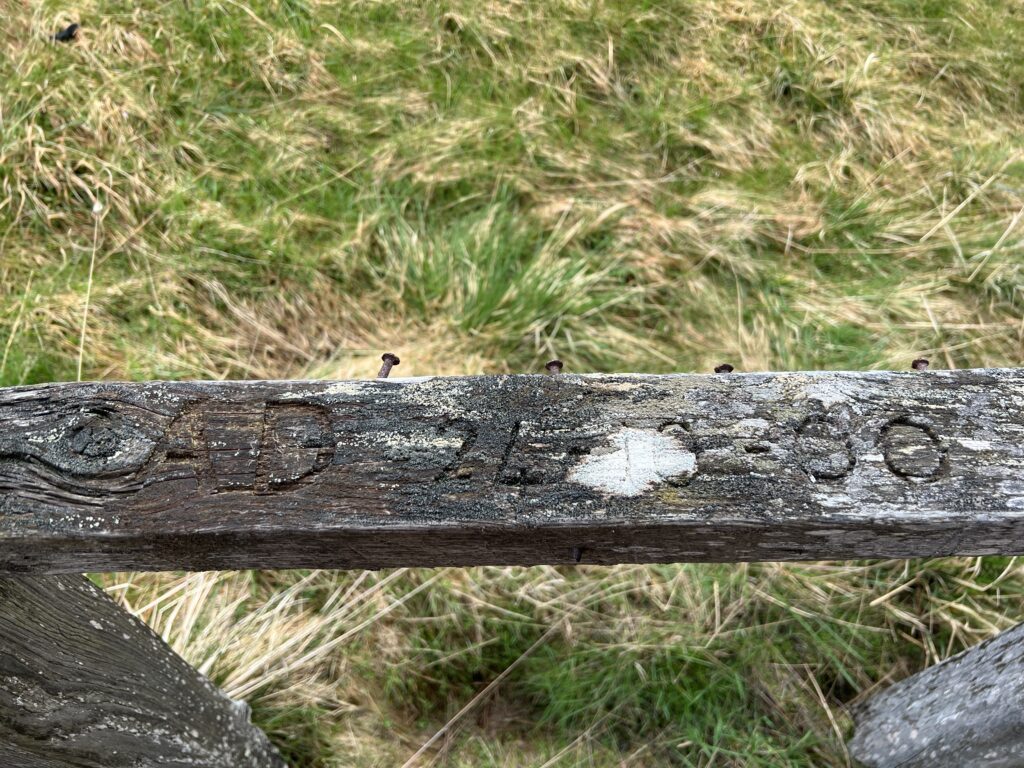
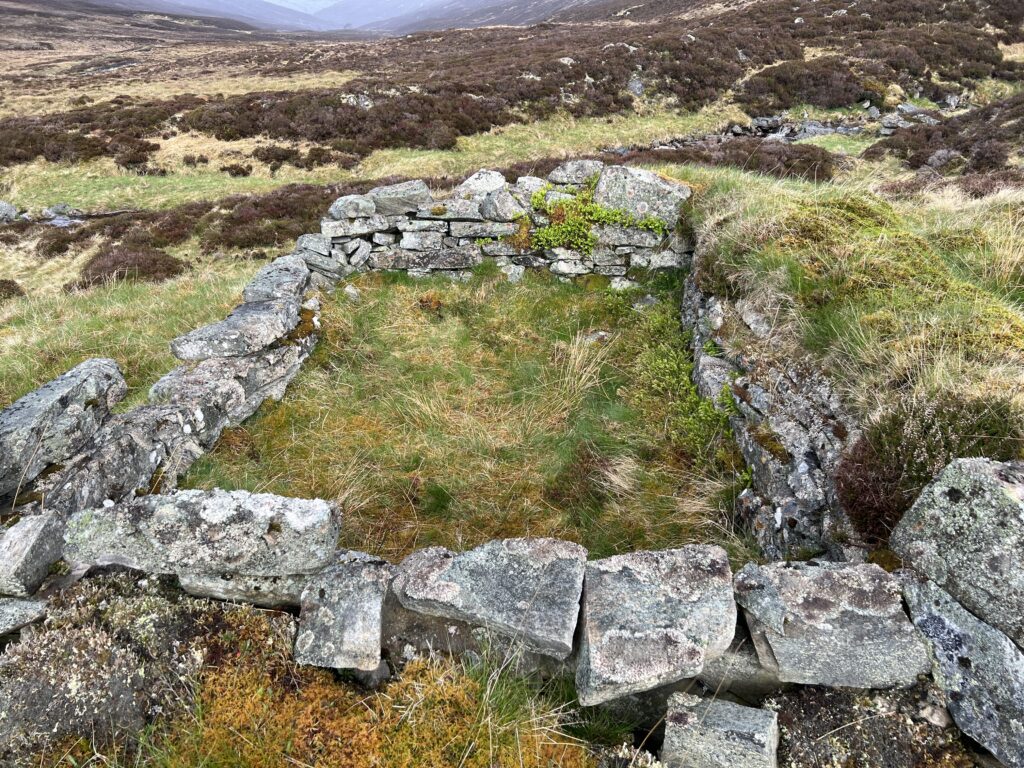


This year’s dispatches already qualify are already front-runners for the 2022 Humor Award (division: Dry): “Crippled, however, he might be in our league.”
In another division would be the $350,000 bothy renovation by the world’s 255th richest person. If he would like to diversify his holdings, I have a property for him in Baltimore.
How painful to have to pass up that five star bothy.